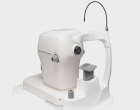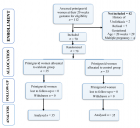Abstract
Research Article
Comparative Hemodynamic Evaluation of the LUCAS® Device and Manual Chest Compression in Patients with Out-of-Hospital Cardiac Arrest
Mirek S, Opprecht N*, Daisey A, Milojevitch E, Soudry- Faure A and Freysz M
Published: 19 April, 2017 | Volume 2 - Issue 1 | Pages: 016-024
Chest compression is the fundamental technique in cardiopulmonary resuscitation (CPR) in patients with cardiac arrest [1]. The quality and the early implementation of CPR are essential to improve the prognosis and the chances of restoring spontaneous circulation. In the literature, there are some articles about the poor quality of chest compression [2-4]. Therefore chest compression is as crucial as alerting the emergency services or early defibrillation in the survival chain. In accordance with the guidelines, chest compressions have to be performed continuously to improve the outcome [5]. However, the efficacy of manual chest compression diminishes over time with the fatigue of the provider (which appears within minutes of starting the procedure), and is impaired during transportation manoeuvres, which expose patients to unforeseen interruptions and a deterioration in the quality du massage in terms of power and rhythm. The efficacy of manual chest compression has been reported to fall by 20% per minute [6,7]. Mechanical chest compression overcome this problem of operator fatigue by ensuring constant efficacy in terms of both quality and quantity. Even though current data show no difference between manual chest compression and automated systems in terms of survival, haemodynamic studies in animal models have shown that mechanical techniques are more effective [8].
Read Full Article HTML DOI: 10.29328/journal.jcicm.1001005 Cite this Article Read Full Article PDF
References
- Perkins GD, Lall R, Quinn T, Deakin CD, Cooke MW, et al. Mechanical versus manual chest compression for out-of-hospital cardiac arrest (PARAMEDIC): a pragmatic, cluster randomised controlled trial. Lancet. 2015; 385: 947-955. Ref.: https://goo.gl/9Cu42Y
- Wik L, Kramer-Johansen J, Myklebust H, Sørebø H, Svensson L, et al. Quality of cardiopulmonary resuscitation during out-of-hospital cardiac arrest. JAMA. 2005; 293: 299-304. Ref.: https://goo.gl/Csd5aN
- Abella BS, Alvarado JP, Myklebust H, Edelson DP, Barry A, et al. Quality of cardiopulmonary resuscitation during in-hospital cardiac arrest. JAMA. 2005; 293: 305-310. Ref.: https://goo.gl/1WyPwL
- Kampmeier TG, Lukas RP, Steffler C, Sauerland C, Weber TP, et al. Chest compression depth after change in CPR guidelines--improved but not sufficient. Resuscitation. 2014; 85: 503-508. Ref.: https://goo.gl/HI9168
- Ewy GA. Continuous-chest-compression cardiopulmonary resuscitation for cardiac arrest. Circulation. 2007; 116: 2894-2896. Ref.: https://goo.gl/VhWTrW
- Hightower D, Thomas SH, Stone CK, Dunn K, March JA. Decay in quality of closed-chest compressions over time. Ann Emerg Med. 1995; 26: 300-303. Ref.: https://goo.gl/zrYbi5
- Ock SM, Kim YM, Chung Jh, Kim SH. Influence of physical fitness on the performance of 5-minute continuous chest compression. Eur J Emerg Med. 2011; 18: 251-256. Ref.: https://goo.gl/nqsory
- Gässler H, Ventzke MM, Lampl L, Helm M. Transport with ongoing resuscitation: a comparison between manual and mechanical compression. Emerg Med J. 2013; 30: 589-592. Ref.: https://goo.gl/OgjC5O
- Nathens AB, Brunet FP, Maier RV. Development of trauma systems and effect on outcomes after injury. Lancet. 2004; 363: 1794-1801. Ref.: https://goo.gl/XY56BC
- Yeguiayan JM, Garrigue D, Binquet C, Jacquot C, Duranteau J, et al. Medical pre-hospital management reduces mortality in severe blunt trauma: a prospective epidemiological study. Crit Care. 2011; 15: R34. Ref.: https://goo.gl/cewDpP
- Duchateau FX, Gueye P, Curac S, Tubach F, Broche C, et al. Effect of the AutoPulse automated band chest compression device on hemodynamics in out-of-hospital cardiac arrest resuscitation. Intensive Care Med. 2010; 36: 1256-1260. Ref.: https://goo.gl/Z0KM0L
- Nolan JP, Soar J, Zideman DA, Biarent D, Bossaert LL, et al. European Resuscitation Council Guidelines for Resuscitation 2010 Section 1. Executive summary. Resuscitation. 2010; 81: 1219-1276. Ref.: https://goo.gl/HXOvJi
- Steen S, Liao Q, Pierre L, Paskevicius A, Sjöberg T. Continuous intratracheal insufflation of oxygen improves the efficacy of mechanical chest compression-active decompression CPR. Resuscitation. 2004; 62: 219-227. Ref.: https://goo.gl/NxfsKQ
- Sende J, Jabre P, Leroux B, Penet C, Lecarpentier E, et al. Invasive arterial blood pressure monitoring in an out-of-hospital setting: an observational study. Emerg Med J. 2009; 26: 210-212. Ref.: https://goo.gl/FwVGFr
- Bertrand C, Hemery F, Carli P, Goldstein P, Espesson C, et al. Constant flow insufflation of oxygen as the sole mode of ventilation during out-of-hospital cardiac arrest. Intensive Care Med. 2006; 32: 843-851. Ref.: https://goo.gl/7xOG8u
- Horster S, Stemmler HJ, Strecker N, Brettner F, Hausmann A, et al. Cardiac Output Measurements in Septic Patients: Comparing the Accuracy of USCOM to PiCCO. Crit Care Res Pract. 2012; 2012: 270631. Ref.: https://goo.gl/dkIXVM
- Phillips R, Lichtenthal P, Sloniger J, Burstow D, West M, et al. Noninvasive cardiac output measurement in heart failure subjects on circulatory support. Anesth Analg. 2009; 108: 881-886. Ref.: https://goo.gl/C1AqKK
- Duchateau FX, Gauss T, Burnod A, Ricard-Hibon A, Juvin P, et al. Feasibility of cardiac output estimation by ultrasonic cardiac output monitoring in the prehospital setting. Eur J Emerg Med. 2011; 18: 357-359. Ref.: https://goo.gl/pyuNgP
- Gueugniaud PY, David JS, Chanzy E, Hubert H, Dubien PY, et al. Vasopressin and epinephrine vs. epinephrine alone in cardiopulmonary resuscitation. N Engl J Med. 2008; 359: 21-30. Ref.: https://goo.gl/R4ro2G
- Goldberger ZD, Chan PS, Berg RA, Kronick SL, Cooke CR, et al. Duration of resuscitation efforts and survival after in-hospital cardiac arrest: an observational study. Lancet. 2012; 380: 1473-1481. Ref.: https://goo.gl/oGWMSE
- Reynolds JC, Frisch A, Rittenberger JC, Callaway CW. Duration of resuscitation efforts and functional outcome after out-of-hospital cardiac arrest: when should we change to novel therapies? Circulation. 2013; 128: 2488-2494. Ref.: https://goo.gl/BXPWjT
- Sunde K, Wik L, Naess PA, Grund F, Nicolaysen G, et al. Improved haemodynamics with increased compression-decompression rates during ACD-CPR in pigs. Resuscitation. 1998; 39: 197-205. Ref.: https://goo.gl/kp1rrt
- Westfall M, Krantz S, Mullin C, Kaufman C. Mechanical versus manual chest compressions in out-of-hospital cardiac arrest: a meta-analysis. Crit Care Med. 2013; 41: 1782-1789. Ref.: https://goo.gl/WoRjK0
- Rubertsson S, Karlsten R. Increased cortical cerebral blood flow with LUCAS; a new device for mechanical chest compressions compared to standard external compressions during experimental cardiopulmonary resuscitation. Resuscitation. 2005; 65: 357-363. Ref.: https://goo.gl/uNWXnw
- Liao Q, Sjöberg T, Paskevicius A, Wohlfart B, Steen S. Manual versus mechanical cardiopulmonary resuscitation. An experimental study in pigs. BMC Cardiovasc Disord. 2010; 10: 53. Ref.: https://goo.gl/jowCDI
- Larsen AI, Hjørnevik AS, Ellingsen CL, Nilsen DWT. Cardiac arrest with continuous mechanical chest compression during percutaneous coronary intervention. A report on the use of the LUCAS device. Resuscitation. 2007; 75: 454-459. Ref.: https://goo.gl/czdLw7
- Liu Q, Li C. [The effect of the external chest compression appliance (AutoPulse) on cardiac arrest in the emergency department and influence on blood gas and N-terminal B-type natriuretic peptide]. Zhongguo Wei Zhong Bing Ji Jiu Yi Xue. 2010; 22: 660-662. Ref.: https://goo.gl/JE5JXI
- Smekal D, Lindgren E, Sandler H, Johansson J, Rubertsson S. CPR-related injuries after manual or mechanical chest compressions with the LUCASTM device: a multicentre study of victims after unsuccessful resuscitation. Resuscitation. 2014; 85: 1708-1712. Ref.: https://goo.gl/ZLSE8z
- Axelsson C, Karlsson T, Axelsson AB, Herlitz J. Mechanical active compression-decompression cardiopulmonary resuscitation (ACD-CPR) versus manual CPR according to pressure of end tidal carbon dioxide (P(ET) CO2) during CPR in out-of-hospital cardiac arrest (OHCA). Resuscitation. 2009; 80: 1099-1103. Ref.: https://goo.gl/Ld2fJh
- Dickinson ET, Verdile VP, Schneider RM, Salluzzo RF. Effectiveness of mechanical versus manual chest compressions in out-of-hospital cardiac arrest resuscitation: a pilot study. Am J Emerg Med. 1998; 16: 289-292. Ref.: https://goo.gl/qU0cX5
- Tanabe Y, Hosaka Y, Ito M, Ito E, Suzuki K. Significance of end-tidal P(CO(2)) response to exercise and its relation to functional capacity in patients with chronic heart failure. Chest. 2001; 119: 811-817. Ref.: https://goo.gl/kiHQNb
- Travers AH, Perkins GD, Berg RA, Castren M, Considine J, et al. Part 3: Adult Basic Life Support and Automated External Defibrillation: 2015 International Consensus on Cardiopulmonary Resuscitation and Emergency Cardiovascular Care Science With Treatment Recommendations. Circulation. 2015; 132: 51-83. Ref.: https://goo.gl/AxH4Dk
- Gates S, Smith JL, Ong GJ, Brace SJ, Perkins GD. Effectiveness of the LUCAS device for mechanical chest compression after cardiac arrest: systematic review of experimental, observational and animal studies. Heart. 2012; 98: 908-913. Ref.: https://goo.gl/TVfh9C
- Fox J, Fiechter R, Gerstl P, Url A, Wagner H, et al. Mechanical versus manual chest compression CPR under ground ambulance transport conditions. Acute Card Care. 2013; 15: 1-6. Ref.: https://goo.gl/jiPGie
Figures:

Figure 1

Figure 2

Figure 3

Figure 4
Similar Articles
-
Phenibut Overdose in Combination with Fasoracetam: Emerging Drugs of AbuseCristian Merchan*,Ryan Morgan,John Papadopoulos,David Fridman. Phenibut Overdose in Combination with Fasoracetam: Emerging Drugs of Abuse. . 2016 doi: 10.29328/journal.jcicm.1001001; 1: 001-004
-
Nursing Care of ICU Patients Lightly Sedated with DexmedetomidineÅsa Engström*,Maria Johansson,Mia Mattsson,Ulrica Strömbäck. Nursing Care of ICU Patients Lightly Sedated with Dexmedetomidine. . 2016 doi: 10.29328/journal.jcicm.1001002; 1: 005-013
-
Complicated Hepatitis A Virus Infection: A Report of Three Cases from Single Tertiary Referral CenterOmkolsoum M Alhaddad,Maha M Elsabaawy*,Khalid A Gameel,Marwa Elfauomy,Olfat Hendy,Eman A Rewisha. Complicated Hepatitis A Virus Infection: A Report of Three Cases from Single Tertiary Referral Center. . 2016 doi: 10.29328/journal.jcicm.1001003; 1: 014-020
-
Critical Management of Status EpilepticusFarahnaz Fallahian*,Seyed MohammadReza Hashemian*. Critical Management of Status Epilepticus. . 2017 doi: 10.29328/journal.jcicm.1001004; 2: 001-015
-
Comparative Hemodynamic Evaluation of the LUCAS® Device and Manual Chest Compression in Patients with Out-of-Hospital Cardiac ArrestMirek S,Opprecht N*,Daisey A,Milojevitch E,Soudry- Faure A,Freysz M. Comparative Hemodynamic Evaluation of the LUCAS® Device and Manual Chest Compression in Patients with Out-of-Hospital Cardiac Arrest. . 2017 doi: 10.29328/journal.jcicm.1001005; 2: 016-024
-
Chemotherapy Exposure and outcomes of Chronic Lymphoid Leukemia PatientsJosephina G Kuiper*,Patience Musingarimi,Christoph Tapprich,Fernie JA Penning-van Beest,Maren Gaudig. Chemotherapy Exposure and outcomes of Chronic Lymphoid Leukemia Patients. . 2017 doi: 10.29328/journal.jcicm.1001006; 2: 025-033
-
Knowledge, attitude and practices associated with diagnosis and management of Skin and Soft Tissue Infections (SSTIs) among Pediatric Residents and Physicians in a Tertiary Hospital in United Arab Emirates (UAE)Eiman Al Blooshi,Farah Othman,Abeer Al Naqbi,Majid Al Rumaithi,Khawla Fikry,Mariam Al Jneibi,Hossam Al Tatari*. Knowledge, attitude and practices associated with diagnosis and management of Skin and Soft Tissue Infections (SSTIs) among Pediatric Residents and Physicians in a Tertiary Hospital in United Arab Emirates (UAE) . . 2017 doi: 10.29328/journal.jcicm.1001007; 2: 034-039
-
Unusual presentation of a bilateral basilar stroke: BradycardiaZidouh S*,Jidane S,Nabhani T,Chouaib N,Sirbou R,Belkouch,Belyamani L. Unusual presentation of a bilateral basilar stroke: Bradycardia. . 2017 doi: 10.29328/journal.jcicm.1001008; 2: 040-041
-
Sinking Skin Flap SyndromeLiew BS*,Rosman AK,Adnan JS. Sinking Skin Flap Syndrome. . 2017 doi: 10.29328/journal.jcicm.1001009; 2: 042-048
-
Intensive Care Units (ICU): The clinical pharmacist role to improve clinical outcomes and reduce mortality rate- An undeniable functionLuisetto M*,Ghulam Rasool Mashori. Intensive Care Units (ICU): The clinical pharmacist role to improve clinical outcomes and reduce mortality rate- An undeniable function. . 2017 doi: 10.29328/journal.jcicm.1001010; 2: 049-056
Recently Viewed
-
Cancer Cell Resistance: The Emergent Intelligence of Adaptation and the Need for Biophysical IntegrationMohamed H Doweidar*. Cancer Cell Resistance: The Emergent Intelligence of Adaptation and the Need for Biophysical Integration. Int J Clin Microbiol Biochem Technol. 2025: doi: 10.29328/journal.ijcmbt.1001031; 8: 007-008
-
Unveiling the Impostor: Pulmonary Embolism Presenting as Pneumonia: A Case Report and Literature ReviewSaahil Kumar,Karuna Sree Alwa*,Mahesh Babu Vemuri,Anumola Gandhi Ganesh Gupta,Nuthan Vallapudasu,Sunitha Geddada. Unveiling the Impostor: Pulmonary Embolism Presenting as Pneumonia: A Case Report and Literature Review. J Pulmonol Respir Res. 2025: doi: 10.29328/journal.jprr.1001065; 9: 001-005
-
Unmasking Renal Complications of Immunotherapy: A Case of Nivolumab-induced FSGSUrvashi Khan*,Lakshmi Kant Jha,Pranav Tyagi. Unmasking Renal Complications of Immunotherapy: A Case of Nivolumab-induced FSGS. J Clini Nephrol. 2025: doi: 10.29328/journal.jcn.1001150; 9: 031-032
-
Lymphoscintigraphic Investigations for Women with Lower Limb Edemas After One PregnancyCallebaut Gregory,Leduc Olivier,Pierre Bourgeois*. Lymphoscintigraphic Investigations for Women with Lower Limb Edemas After One Pregnancy. Arch Case Rep. 2025: doi: 10.29328/journal.acr.1001129; 9: 066-072
-
GELS as Pharmaceutical Form in Hospital Galenic Practice: Chemico-physical and Pharmaceutical AspectsLuisetto M*,Edbey Kaled,Mashori GR,Ferraiuolo A,Fiazza C,Cabianca L,Latyschev OY. GELS as Pharmaceutical Form in Hospital Galenic Practice: Chemico-physical and Pharmaceutical Aspects. Arch Surg Clin Res. 2025: doi: 10.29328/journal.ascr.1001084; 9: 001-007
Most Viewed
-
Sinonasal Myxoma Extending into the Orbit in a 4-Year Old: A Case PresentationJulian A Purrinos*, Ramzi Younis. Sinonasal Myxoma Extending into the Orbit in a 4-Year Old: A Case Presentation. Arch Case Rep. 2024 doi: 10.29328/journal.acr.1001099; 8: 075-077
-
Evaluation of Biostimulants Based on Recovered Protein Hydrolysates from Animal By-products as Plant Growth EnhancersH Pérez-Aguilar*, M Lacruz-Asaro, F Arán-Ais. Evaluation of Biostimulants Based on Recovered Protein Hydrolysates from Animal By-products as Plant Growth Enhancers. J Plant Sci Phytopathol. 2023 doi: 10.29328/journal.jpsp.1001104; 7: 042-047
-
Feasibility study of magnetic sensing for detecting single-neuron action potentialsDenis Tonini,Kai Wu,Renata Saha,Jian-Ping Wang*. Feasibility study of magnetic sensing for detecting single-neuron action potentials. Ann Biomed Sci Eng. 2022 doi: 10.29328/journal.abse.1001018; 6: 019-029
-
Physical activity can change the physiological and psychological circumstances during COVID-19 pandemic: A narrative reviewKhashayar Maroufi*. Physical activity can change the physiological and psychological circumstances during COVID-19 pandemic: A narrative review. J Sports Med Ther. 2021 doi: 10.29328/journal.jsmt.1001051; 6: 001-007
-
Pediatric Dysgerminoma: Unveiling a Rare Ovarian TumorFaten Limaiem*, Khalil Saffar, Ahmed Halouani. Pediatric Dysgerminoma: Unveiling a Rare Ovarian Tumor. Arch Case Rep. 2024 doi: 10.29328/journal.acr.1001087; 8: 010-013

HSPI: We're glad you're here. Please click "create a new Query" if you are a new visitor to our website and need further information from us.
If you are already a member of our network and need to keep track of any developments regarding a question you have already submitted, click "take me to my Query."

















































































































































